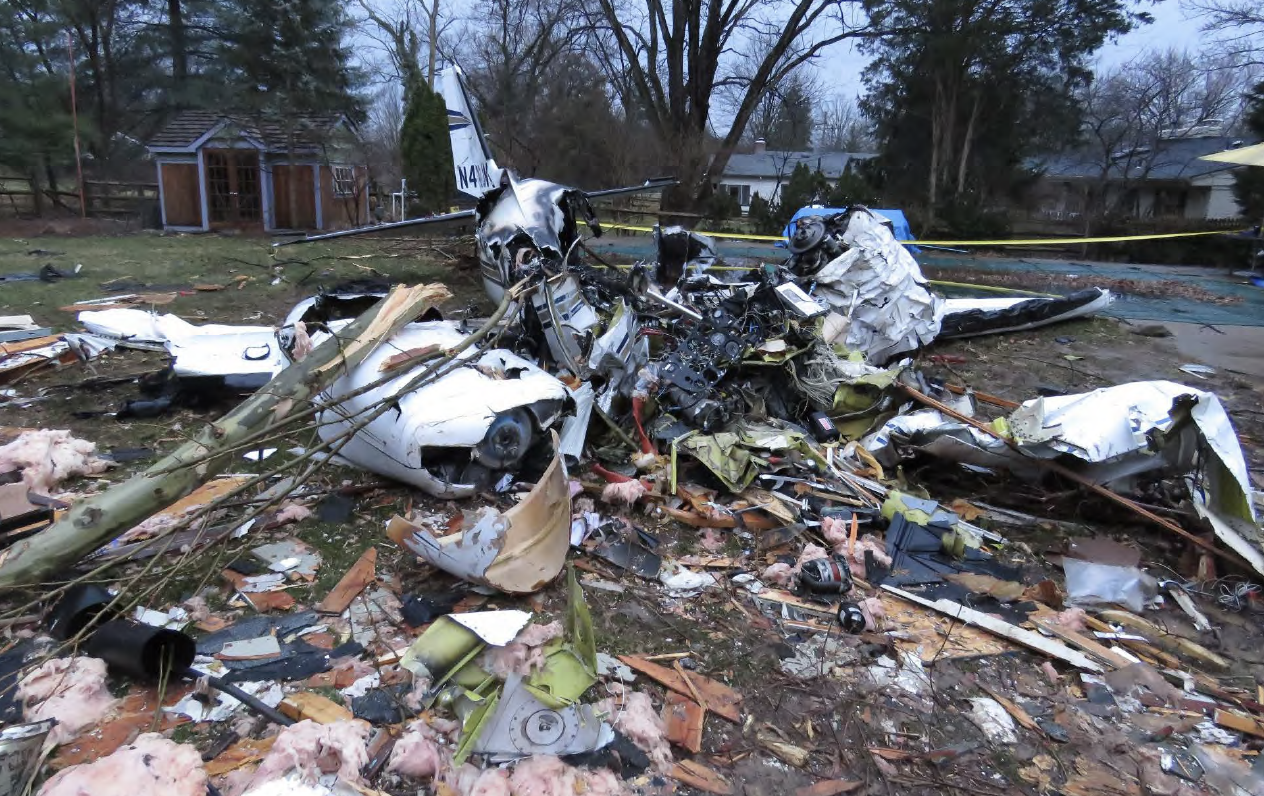
Editor's Note: This is the first of a three-part article.
When you think about it, the end result of all flight planning, the far-right column for those of you who have manually constructed a flight plan, is “Fuel Remaining.” If fuel were infinite, all one would have to do is check the weather to see if their equipment was capable of the approach at the destination. In fact, one could make the argument that with sufficient fuel a pilot could merely go somewhere and wait for improvement in the destination weather. I know, no one would do that, but it points out that fuel is the final determinant, on paper, in planning a mission.
There probably can be no more nerve-wracking experience than being airborne and watching a fuel system deplete with no concrete directly in front of the windshield. I have a preliminary report of a foreign airliner that, on a mission between two relatively close airports, missed the approach at the destination. Having flown through moderate to severe turbulence, passengers were already in a highly agitated state of mind when, with great relief, they saw the ground at their destination airport as the plane approached.
Due to poor forward visibility, the pilot initiated a missed approach and diversion to their alternate. The entire cabin reportedly started praying. Arriving at the alternate, the pilots, thinking they had it made, informed the passengers of the low fuel condition. They then missed the approach at the alternate due to non-forecast bad weather and proceeded to their third airport. Tears and outright crying were added to the praying. On the way to the third airport, a final airport opened and allowed them to land. They had less than 10 min. of fuel remaining upon landing.
Flying cannot get much scarier.
The following comes from the NTSB report dealing with a recent accident review:
A commercial pilot was conducting an aerial observation (surveying) flight in a Piper PA-31-350 Navajo Chieftain on March 12, 2019. Several hours into the flight, he advised ATC that the multiengine-piston airplane had a fuel problem and he needed to return to the departure airport. When the airplane was 8 mi. from that airport, and after passing several other airports, the pilot informed ATC that he was unsure if the airplane could reach the field.
One witness reported that, after he heard an engine sputter, the airplane "was on its left side flying crooked." Additional witnesses reported that the airplane turned to the left before it "nose-dived" into a neighborhood, impacting a tree before coming to rest in the backyard of a residence. A witness approached the wreckage immediately after the accident and observed a small flame rising from the area of the left engine. Video recorded on that witness' mobile phone several minutes later showed the airplane engulfed in flames. Examination of the wreckage revealed no evidence of any preimpact mechanical malfunctions or failures of either engine.
Each wing contained an inboard (main) and outboard (auxiliary) fuel tank, which were standard components. Fuel for each engine was routed from either the main or auxiliary fuel tank to the selector valve, fuel filter, fuel boost pump, emergency fuel pump, firewall shutoff, engine-driven fuel pump and fuel injectors. The engine-driven fuel pumps ran continuously and were not controllable by the pilot. Two electric fuel quantity gauges indicated the fuel quantity in the respective (left or right wing) selected fuel system tank (main or auxiliary). During normal operation, each engine was supplied with fuel from its respective fuel system. In an emergency, fuel from one system could supply the other engine through a cross-feed.
Each wing also had a nacelle fuel tank that was located aft of the respective engine. According to the airplane’s maintenance records, the nacelle fuel tanks were installed in the airplane in accordance with a supplemental type certificate (STC) in June 2017.
This STC also included the following operating limitation: “Do not transfer fuel until main tanks are at least one-half full or less.” The manual also included the following normal operating procedure: “Approximately 55 min. are required to transfer all of the fuel out of the nacelle tanks.”
The fuel systems feeding both engines were damaged by impact forces, but the examined components generally displayed that only trace amounts of fuel remained, with the exception of the left-engine nacelle fuel tank. The fuel amount in the nacelle tanks was not readable in the cockpit. By design, the fuel in the nacelle tanks (one on each side) could not be supplied directly to either engine, but instead relied on an electric pump to transfer it into the main tank, from which it would be fed to the respective engines. Post-accident interviews with company pilots revealed that there was no way to directly monitor the quantity of fuel in the nacelle tanks during flight, nor was there any direct indication that the fuel pumps were operating.
Company pilots reported using various methods fuel management in airplanes equipped with nacelle fuel tanks. Some pilots used fuel from the main tanks until they were empty, whereas others used fuel from the main tanks for 1.5 to 2 hr. and then switched to the auxiliary tanks.
After switching to the auxiliary tanks, these pilots turned on the nacelle fuel transfer pumps and used the auxiliary tanks until they were empty. This allows time for fuel to transfer from the nacelle tanks to the main tanks. One of the pilots, while using the nacelle tanks in this manner, switched to the main tanks every 30 min. so that he could check the fuel gauges and ensure that the fuel was transferring from the nacelle to the main tanks. After all of the fuel from the auxiliary tanks was used, the pilot would switch back to the main tanks, which then contained the fuel from the nacelle tanks, to complete the flight. The available evidence showed no standardized procedure or published guidance issued by the operator to company pilots flying the PA-31-350.
Given the extent of the fire damage to this area of the wreckage, and the witness report that the post-impact fire originated there, it is, indeed, likely that the left nacelle tank contained fuel. Had the pilot not activated this nacelle tank pump, or had this pump failed during the flight, it would have rendered the fuel in the tank inaccessible. Given this information it is likely that the fuel supply, in that left nacelle tank, was not available.
Other pilots who flew similar airplanes for the operator, as well as a review of maintenance records for those airplanes, revealed at least three instances of those transfer pumps failing in the months surrounding the accident. Also, the accident pilot and others had reported fuel leaks in the system of the accident airplane.
Flying the type of equipment that many of us use, this setup seems nearly impossible to believe. But I remember a similar system in the Cessna O-2 Skymaster that the Air Guard flew for many years. When the fuel in the ungauged aux tanks was deemed necessary, usually on a long cross-country, we, as a standard procedure, would run the main, gauged tanks to about half and then switch both engines to the aux tanks. After running on those for a given time, we’d switch one of the engines back to the main tank and leave the other to drain the auxiliary until the flight plan said it was nearly empty. At that point we switched it back to the main tank and repeated the procedure with the other engine.
Given that this was usually done on a long, straight and level cross-country, if the aux tank happened to run dry, merely switching back to the main tank immediately restored the affected engine. In short, we had a similar setup as the accident airplane but a very strong and standard procedure for handling it.





